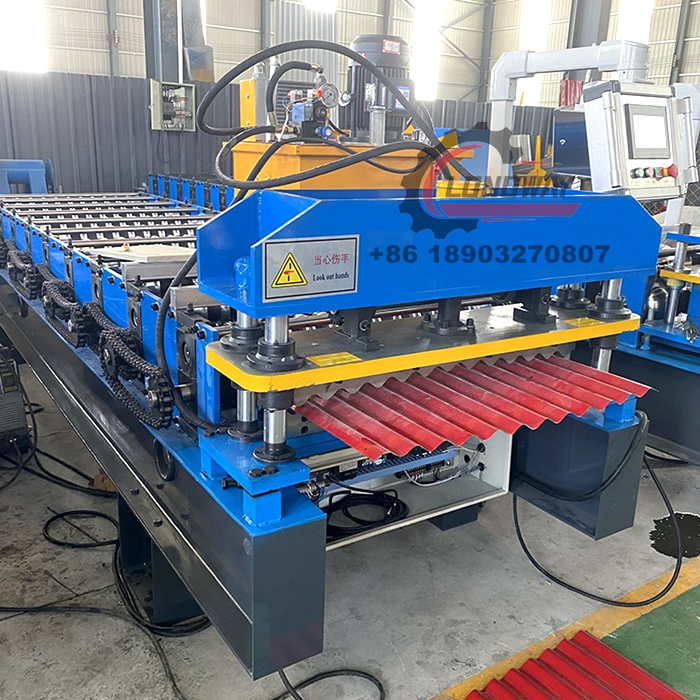trapezoidal panel roll forming machine
Understanding the Trapezoidal Panel Roll Forming Machine
In the modern manufacturing landscape, the trapezoidal panel roll forming machine stands out as a crucial piece of equipment for producing high-quality trapezoidal metal panels. These panels are widely used in construction and industrial applications due to their durability, aesthetic appeal, and efficient design. This article explores the working principles, benefits, and applications of trapezoidal panel roll forming machines.
What is a Trapezoidal Panel?
Trapezoidal panels are characterized by their unique trapezoidal shape, which consists of a flat top and sloping sides that form a trapezium. This design not only gives the panels a distinct look but also enhances their structural strength. They are primarily made from steel or aluminum, making them ideal for roofing, wall cladding, and various other applications where robustness and longevity are essential.
The Roll Forming Process
The trapezoidal panel roll forming machine utilizes a continuous roll forming process, which involves passing flat metal sheets through a series of rollers that progressively shape the material into the desired trapezoidal profile. The process begins with feeding the material into the machine, where it is gradually shaped as it travels through multiple rollers. The design and arrangement of these rollers are crucial, as they determine the final profile and dimensions of the trapezoidal panels.
One of the significant advantages of the roll forming process is its efficiency. Once the machine is set up with the desired roller configuration, it can produce panels at a high rate, minimizing waste and maximizing productivity. Additionally, the process allows for the incorporation of various features, such as embossments or cut-outs, further enhancing the functionality and aesthetics of the panels.
Benefits of Trapezoidal Panel Roll Forming Machines
1. High Efficiency These machines can produce large quantities of panels in a relatively short time, making them ideal for large-scale construction projects.
2. Cost-Effective Production The continuous nature of the roll forming process reduces material waste and labor costs, allowing manufacturers to offer competitive pricing.
3. Versatility Trapezoidal panel roll forming machines are adaptable and can be configured to produce panels of different sizes, thicknesses, and profiles. This versatility enables manufacturers to cater to diverse market demands.
trapezoidal panel roll forming machine

4. Durability Panels produced by roll forming machines are known for their strength and resistance to weather and environmental conditions. Their robust construction ensures a long lifespan with minimal maintenance.
5. Aesthetic Appeal The professional finish of the panels can enhance the overall appearance of buildings, making them desirable for various architectural applications.
Applications of Trapezoidal Panels
Trapezoidal panels are widely used in several sectors, including
- Industrial Buildings Due to their strength and durability, trapezoidal panels are commonly used for roofs and walls in industrial settings, warehouses, and factories.
- Agricultural Facilities Their resistance to harsh weather conditions makes them ideal for barns and agricultural storage.
- Commercial Structures Many businesses utilize trapezoidal panels for modern office buildings, shopping centers, and recreational facilities, benefiting from their sleek design and durability.
- Residential Projects Trapezoidal panels are also increasingly popular in residential construction for roofing and decorative siding.
Conclusion
The trapezoidal panel roll forming machine plays a vital role in the production of high-quality trapezoidal panels that meet the needs of various industries. With its efficiency, cost-effectiveness, and versatility, this machine not only enhances manufacturing capabilities but also contributes to the overall aesthetic and structural integrity of modern buildings. As the demand for durable and visually appealing construction materials continues to rise, trapezoidal panel roll forming machines will remain at the forefront of the industry.
-
Roof Panel Machines: Buying Guide, Types, and PricingNewsJul.04, 2025
-
Purlin Machines: Types, Features, and Pricing GuideNewsJul.04, 2025
-
Metal Embossing Machines: Types, Applications, and Buying GuideNewsJul.04, 2025
-
Gutter Machines: Features, Types, and Cost BreakdownNewsJul.04, 2025
-
Cut to Length Line: Overview, Equipment, and Buying GuideNewsJul.04, 2025
-
Auto Stacker: Features, Applications, and Cost BreakdownNewsJul.04, 2025
-
Top Drywall Profile Machine Models for SaleNewsJun.05, 2025








